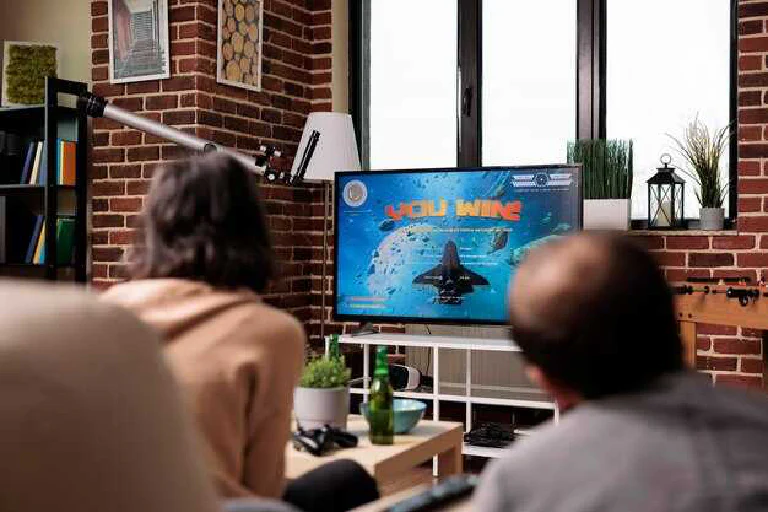In 2025, the Smart TV is no longer just a television; it’s the vibrant, connected heart of the modern home. It has evolved from a passive screen for broadcast channels into a powerful, internet-connected computer designed for streaming media, gaming, web browsing, and even controlling your smart home ecosystem. But to unlock this potential, you need to understand its core components and how to set it up correctly.
This comprehensive guide will walk you through everything you need to know about your 2025 Smart TV. We’ll explore the different operating systems that power these devices, detail the crucial steps for connecting to the internet, and provide a robust troubleshooting manual for the most common issues you might face.
The Brains of the Operation: A Guide to Smart TV Operating Systems
The operating system (OS) is the software foundation of your Smart TV. It dictates the user interface, the available apps, the overall performance, and the unique features you can access. Four major players dominate the market in 2025.

Google TV (on an Android TV backbone): Found on a wide range of brands like Sony, TCL, Hisense, and Xiaomi, Google TV is a content-forward powerhouse. Instead of just showing a grid of apps, its “For You” tab aggregates movies and shows from all your subscribed streaming services (like Netflix, Disney+, and HBO Max) into one place. With Google Assistant built-in for powerful voice search and Chromecast for easy screen mirroring, it’s an incredibly versatile and user-friendly choice.
LG webOS: Exclusive to LG televisions, webOS is renowned for its speed and its unique Magic Remote. This motion-controlled remote lets you point and click on the screen like a mouse, making navigation incredibly intuitive. The OS features a clean, customizable ribbon of apps called the Launch Bar at the bottom of the screen, allowing for quick access and seamless multitasking without interrupting what you’re currently watching.
Samsung Tizen: Powering all Samsung Smart TVs, Tizen is a fast, minimalist OS that excels at performance. Its Smart Hub provides quick access to apps, settings, and connected devices. Tizen’s major strength is its deep integration with the Samsung SmartThings ecosystem, turning your TV into a central dashboard for controlling everything from smart lights to refrigerators. It also includes Samsung TV Plus, a free, ad-supported streaming service offering hundreds of channels.
Roku TV & Amazon Fire TV OS: While Google, LG, and Samsung often build their own hardware, these two platforms are licensed out to various budget-friendly TV manufacturers. Roku TV is celebrated for its dead-simple interface and access to a massive library of “channels” (apps). Amazon Fire TV is a great choice for those embedded in the Amazon ecosystem, offering deep integration with Alexa and Prime Video.
Step 1: Getting Connected to the Internet
A stable internet connection is the lifeblood of your Smart TV. Without it, you’re left with a simple monitor. You have two primary methods for getting online: Wi-Fi (wireless) and Ethernet (wired).
How to Connect via Wi-Fi
This is the most common and convenient method, requiring no extra cables.
- Press the Home or Settings (gear icon) button on your remote control.
- Navigate to the Settings menu, then find the Network & Internet or Connections section.
- Select Wi-Fi and ensure it is turned on.
- Your TV will scan for available wireless networks. Select your home network name (SSID) from the list.
- You will be prompted to enter your Wi-Fi password using the on-screen keyboard. Be careful with capitalization. Once entered, select Connect.
How to Connect via Ethernet Cable
For the best possible performance, a wired connection is unbeatable. It delivers maximum speed and stability, which is ideal for streaming 4K HDR content and competitive online gaming.
- Locate the LAN or Ethernet port on the back or side of your TV. It looks like a larger phone jack.
- Plug one end of an Ethernet cable (Cat 5e or higher is recommended) into this port.
- Plug the other end of the cable into a vacant LAN port on your internet router.
- On your TV, navigate back to the Network & Internet settings and select the Wired or Ethernet option. In most cases, the connection will be established automatically without needing a password.
Wi-Fi vs. Ethernet: The Ultimate Showdown
| Feature | Wi-Fi (Wireless) | Ethernet (Wired) |
|---|---|---|
| Speed | Can be fast, but is susceptible to speed degradation over distance and through walls. | Consistently delivers the maximum speed provided by your internet plan. |
| Stability & Reliability | Prone to interference from other electronics (microwaves, cordless phones) and network congestion. | Extremely stable and reliable. Not affected by wireless interference. |
| Latency (Ping) | Higher latency, which can cause lag in online gaming. | Very low latency, making it the superior choice for gamers. |
| Convenience | Highly convenient. No cables needed, allowing flexible TV placement. | Inconvenient. Requires a physical cable running from your router to your TV. |
| Best Use Case | General streaming, browsing, and homes where running a cable is impractical. | 4K/8K streaming, competitive online gaming, large file downloads, and situations where signal stability is paramount. |
Your Troubleshooting Manual: Solving Common Smart TV Problems
Even the most advanced technology can have its off days. Here’s how to fix the most frequent issues.
Problem: TV Keeps Disconnecting or Won’t Connect to the Internet
This is the most common smart TV frustration.
- The Universal Fix (Power Cycle): Before doing anything else, unplug your TV, your router, and your modem from the power outlet. Wait a full 60 seconds. Plug the modem in first and wait for it to fully boot up. Then, plug in the router and wait for its lights to stabilize. Finally, plug your TV back in. This simple process, known as a power cycle, resolves a surprisingly high number of network issues.
- Check Signal Strength: If you’re on Wi-Fi, go to your network settings and check the signal strength. If it’s less than three bars, your router may be too far away. Consider moving it closer or investing in a Wi-Fi mesh system.
- Update Your TV’s Firmware: Manufacturers constantly release software updates to fix bugs and improve performance. Go to Settings > System > About > Software Update (the path may vary slightly by brand) and check for the latest firmware.
- Test Your Internet: Is the internet down for all devices? Use your phone to visit a website like Speedtest by Ookla to confirm your internet service is working properly.
Problem: An App is Crashing, Freezing, or Not Loading
When a specific app like Netflix or YouTube misbehaves, the issue is rarely with the TV itself.
- Force Stop the App: Go to Settings > Apps > See all apps. Select the problematic application and choose Force Stop. Relaunch it to see if the issue is resolved.
- Clear the App’s Cache: In the same app settings menu, select Clear Cache. This removes temporary files that can become corrupted without deleting your login information.
- Clear the App’s Data: If clearing the cache doesn’t work, use the Clear Data option. Warning: This will reset the app to its factory state, logging you out and deleting any saved settings within the app.
- Reinstall the App: As a last resort, uninstall the application completely and then reinstall it from your TV’s app store.
How to Stop Samsung TV Plus from Launching by Default

By understanding these core principles of setup and troubleshooting, you can ensure your 2025 Smart TV remains a reliable and powerful hub for all your entertainment needs.
